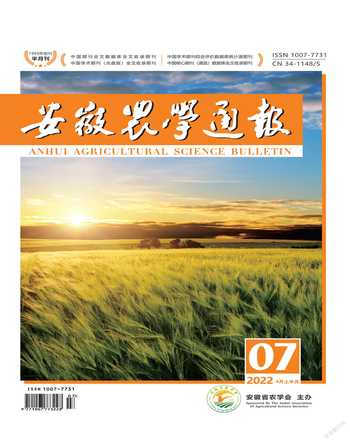基于MCDM的大长山岛海域增殖型海洋牧场人工鱼礁 选址适宜性评价
单晨枫 刘敏 马成龙 王舒奕 李雪敏 吴忠鑫 尹增强 杨军 李晓钰 田涛
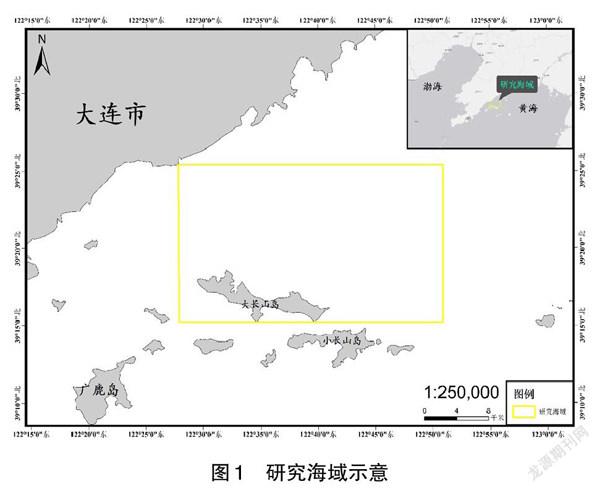
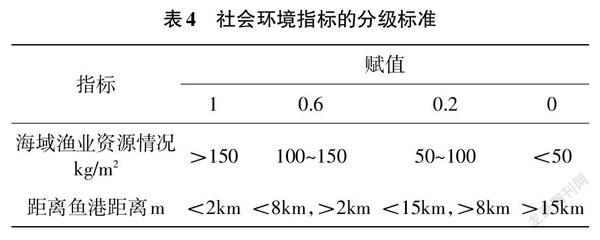
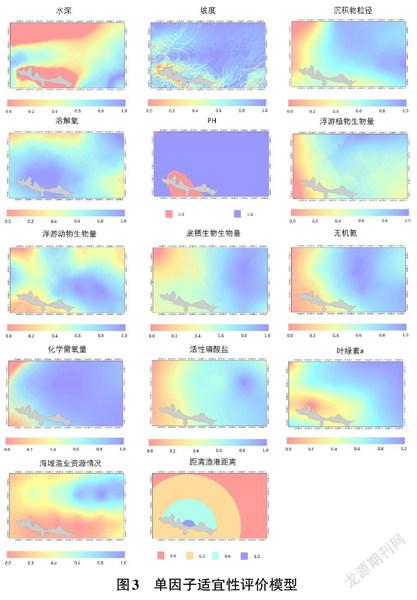
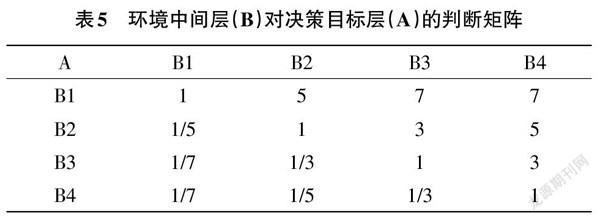
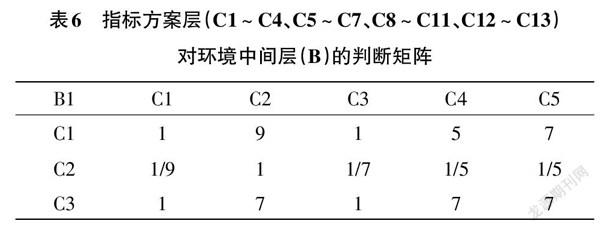
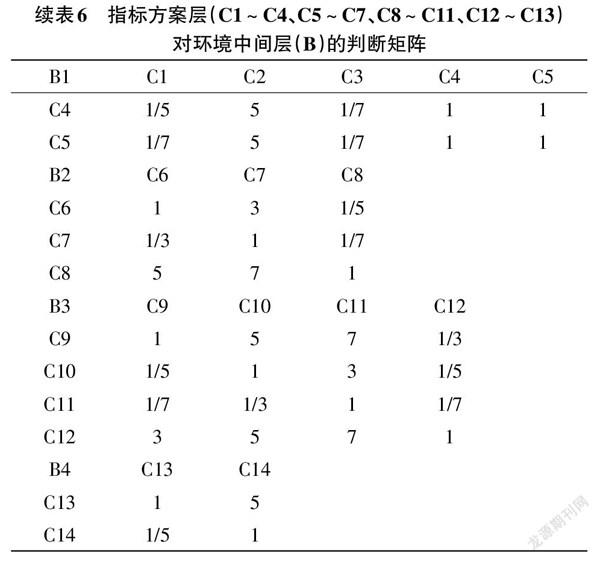
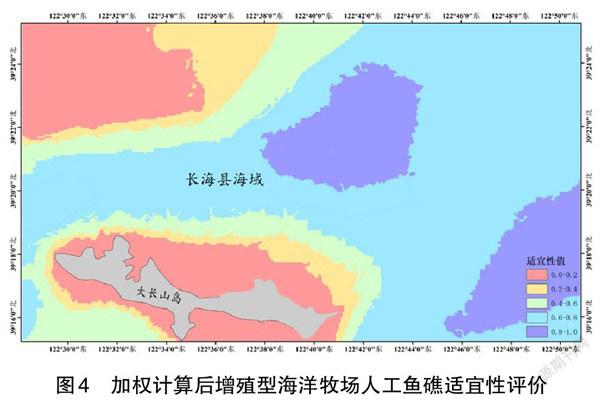
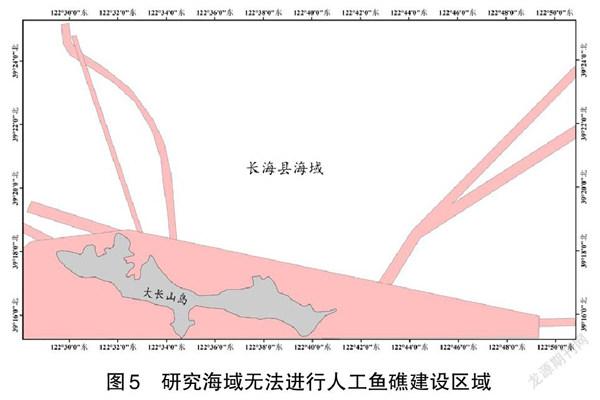

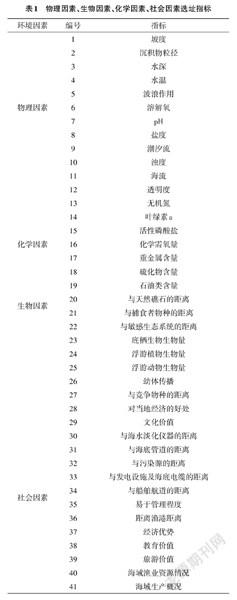



摘 要:为了提高增殖型海洋牧场建设中人工鱼礁选址的科学性,以大长山岛周边海域为研究区域,基于MCDM(多准则决策)对该海域增殖型海洋牧场人工鱼礁开展了适宜性评价研究。根据文献检索和国内外增殖型人工鱼礁建设经验,对41个选址指标进行优先排序,选取了14个指标(水深、坡度、溶解氧、pH、浮游植物生物量、浮游动物生物量、底栖生物生物量、无机氮、活性磷酸盐、化学需氧量、叶绿素a、海域渔业资源情况、易于捕捞程度)作为增殖型海洋牧场人工鱼礁的选址指标,通过GIS的函数计算并叠加形成适宜性评价图。结果表明,大长山岛海域有2块区域的增殖型海洋牧场人工鱼礁的适宜性值高于0.8,为人工鱼礁建设最适区域。最适区域内已投放的人工鱼礁也表现出了较好的建设效果,与适宜性评价结果一致。
关键词:海洋牧场;人工鱼礁;适宜性评价;MCDM;地理信息系统
中图分类号 S953.1 文献标识码 A 文章编号 1007-7731(2022)07-0088-06
1 引言
由于社会发展迅速、人类需求增加及海域生态环境恶化等原因,导致渔业资源衰退,影响海洋渔业资源的可持续发展。因此,海域海洋牧场人工鱼礁的选址需要因地制宜。开发海洋牧场这一新型渔业生产模式,对海域进行合理开发利用,改善海域生态环境,实现渔业生产的可持续发展,是解决当前渔业问题行之有效的途径之一。人工鱼礁建设是海洋牧场的基础生态工程之一,科学构建生物的产卵场、索饵场,营造良好的栖息场所,可以重建海域生态群落,增加海洋生物多样性,恢复生物资源的生产力,促进海域内生物结构优化和生态平衡。
增殖型海洋牧场中人工鱼礁的选址是一项十分重要的工作,如果选址不当,难以达到修复和增殖渔业资源的作用,甚至会起到反作用,破坏原有的生态环境[1]。人工魚礁选址是一个复杂的基于目标的决策过程,国内外大多针对人工鱼礁选址的研究[2-4]并未对选址准则进行解释[5-7],一种基于多准则决策和ArcGIS相结合的方法已被众多学者选择[8-11]。该方法对选址准则的选取和权重赋值进行了量化评价,且随着本底调查数据精度的提高,可输出更精确的选址适宜性分布图[12]。
长海县大长山岛海域岛礁资源丰富,海洋渔业是当地的传统支柱产业之一。开展增殖型海洋牧场建设可以有效地保护当地海域经济对象生物,提高成活率,有效恢复和增殖对象生物资源丰度。对此,近年来长海县积极开展以刺参、海胆、鲍、许氏平鮋、大泷六线鱼等为主要对象物种的增殖型海洋牧场建设,并取得了良好的效果。为此,笔者选择大长山岛海域作为研究区域,基于调查数据,采用MCDM方法开展选址适宜性研究,以期为增殖型海洋牧场中人工鱼礁的选址提供参考依据。
2 材料与方法
2.1 研究海域 研究海域为长海县大长山岛海域,见图1。
2.2 研究方法 利用隶属函数对增殖型海洋牧场中人工鱼礁的选址要素进行标准确定,通过ArcGIS的栅格计算器对各要素进行单因子权重评价,通过成对比较对选址要素进行权重评价,最后基于GIS输出对应海域的增殖型人工鱼礁的选址适宜性评价图。
2.3 评价指标选取 人工鱼礁选址适宜性评价涉及社会、物理、化学、生物等多种环境因素,因此,选取指标时要保证全面性,并且结合选址海域本底调查进行详细评价,使增殖型海洋牧场人工鱼礁选址的适宜性评价具有科学性。在本次研究选址过程中,结合国内外对人工鱼礁选址适宜性评价研究,发现在人工鱼礁选址适宜性评价中,可以先通过选取海洋物理、化学、生物环境的指标进行适宜性评价,然后对部分社会环境进行排除。因此,在人工鱼礁选址适宜性评价中,可以优先考虑物理环境、化学环境、生物环境对选址海域的影响。为保证人工鱼礁选址适宜性评价的准确性,在大长山岛海域的春秋两季本底调查中,进行了生物质量、水质、生态、沉积物等方面的调查。参考Mousavi等[17-38]列出的人工鱼礁选址指标并结合国内的人工鱼礁建设指标,选取41个指标为增殖型海洋牧场人工鱼礁进行选址适宜性评价,详见表1。
表1 物理因素、生物因素、化学因素、社会因素选址指标
[环境因素 编号 指标 物理因素 1 坡度 2 沉积物粒径 3 水深 4 水温 5 波浪作用 6 溶解氧 7 pH 8 盐度 9 潮汐流 10 浊度 11 海流 12 透明度 化学因素 13 无机氮 14 叶绿素a 15 活性磷酸盐 16 化学需氧量 17 重金属含量 18 硫化物含量 19 石油类含量 生物因素 20 与天然礁石的距离 21 与捕食者物种的距离 22 与敏感生态系统的距离 23 底栖生物生物量 24 浮游植物生物量 25 浮游动物生物量 26 幼体传播 27 与竞争物种的距离 社会因素 28 对当地经济的好处 29 文化价值 30 与海水淡化仪器的距离 31 与海底管道的距离 32 与污染源的距离 33 与发电设施及海底电缆的距离 34 与船舶航道的距离 35 易于管理程度 36 距离渔港距离 37 经济优势 38 教育价值 39 旅游价值 40 海域渔业资源情况 41 海域生产概况 ]
通过yaahp软件对41个指标进行优先排序并计算指标的重要程度和权重百分比,绘制二维图,详见图2。从所选择的41个指标内排除重要程度或权重百分比低于平均值的指标[36]。
结果表明,只有14个指标同时具备高于平均值的重要程度及权重百分比(见表2)。
2.4 选址因素评价标准确定 增殖型海洋牧场人工鱼礁选址指标的评价标准,应优先考虑国家标准,如若缺乏对应的国家标准,则需参考国内外相关的人工鱼礁生态适宜性研究。本研究在物理环境、生物环境、化学环境的指标的计算中采用模糊隶属函数,在社会环境的指标计算中采用赋值法。模糊隶属函数及评价标准见表3和表4。
2.5 单因子适宜性模型构建 依据模糊隶属函数评价及分级标准,对14个评价指标分别进行单一指标的适宜性评价,使得各指标取值范围为0~1,0代表适宜性最低,1代表适宜性最高。单一指标的适宜性评价通过ArcGIS进行,首先对指标进行插值分析,使指标数值在研究范围内呈连续分布[46]。依据单一指标的模糊隶属函数,利用ArcGIS的栅格计算器工具对单一指标进行栅格计算,形成单因子的适宜性评价图(见图3)。
2.6 选址指标的权重赋值 根据MCDM法中的层次分析法“1~9值法”赋值法,利用每一层次的指标进行重要性逐对比较,构建判断矩阵。其中,“1~9值法”依照取值标准,分别建立环境中间层对决策目标层的判断矩阵和指标方案层对中间层的判断矩阵[40-41],其结果如表5、表6所示。
根据判断矩阵计算,在化学、生物、物理、社会环境指标对人工鱼礁选址适宜性评价中,物理环境对人工鱼礁选址适宜性的影响较大,其次是生物环境和化学环境,最后是社会环境,4个环境指标对决策目标层影响的权重分别为0.6234、0.2162、0.1057和0.0547。对中间层进行判断矩阵计算得出水深、坡度、沉积物粒径、溶解氧、pH、浮游植物生物量、浮游动物生物量、底栖生物生物量、无机氮、活性磷酸盐、化学需氧量、叶绿素a、海域渔业资源情况、距离渔港距离的权重分别为:0.2415、0.0209、0.2498、0.0571、0.0542、0.0418、0.0180、0.1564、0.0333、0.0111、0.0054、0.0560、0.0456、0.0091。
对判断矩阵进行一致性检验,检验结果CR≤0.1,表明判断矩阵基本一致,符合层次分析法原则。
3 评价结果
基于14个指标的适宜性评价图和各指标权重,通过加权计算可建立初步的人工鱼礁选址的适宜性评价模型(见图4)[46]。利用ArcGIS的栅格计算器工具计算研究海域的人工鱼礁选址适宜性值,加权计算公式如下:
由于研究海域内有航道、海底管道、电缆及海洋保护区等无法进行人工鱼礁建设的海域,因而绘制了排除图(见图5)。
经过对适宜性评价图和排除图的叠加分析,形成长山群岛增殖型海洋牧场人工鱼礁选址适宜性评价图(见图6)。
通过适宜性分析模型計算结果可知,大长山岛海域有2块区域的增殖型海洋牧场人工鱼礁选址适宜性值高于0.8,是建设增殖型海洋牧场人工鱼礁的最适区域。通过调查可以得知,大长山岛海域最适投放增殖型海洋牧场人工鱼礁区域内的多家公司已经成功申报了国家级海洋牧场示范区建设,并开始了人工鱼礁建设工作。截至2021年,已建设人工鱼礁海域游泳生物的资源密度明显比投礁前高,礁区海域各类资源种类均比投礁前的丰富,平均生物量约为建设前的3.5倍,多样性指数和丰富性指数均表现为人工鱼礁区显著高于其他海域。表明鱼礁投放后,礁区集鱼效果明显提高、群落结构明显改善,鱼礁建设取得了明显的增殖效果。可见,本研究使用的方法有一定的可行性和合理性,可为增殖型海洋牧场人工鱼礁建设提供技术支撑和参考依据,同时也可为我国人工鱼礁选址适宜性评价提供一定的借鉴。
4 讨论
人工鱼礁建设可促进海洋生态环境和渔业资源恢复,合理的人工鱼礁选址不仅需要对人工鱼礁建设有着深刻的了解,还需要对海域的生态环境等进行充分调查[43-44]。以前的人工鱼礁选址采用地图排除法,地图排除法通过排除部分无法建设人工鱼礁的海域,来对部分海域的人工鱼礁建设进行选址。但是地图排除法无法说明为何排除后剩余海域适合投放人工鱼礁。本研究通过MCDM对增殖型海洋牧场人工鱼礁选址适宜性进行了评价,在41种选址指标中,通过重要程度及权重百分比的比较选取了14个指标来进行增殖型海洋牧场人工鱼礁选址适宜性评价,来获得最适合建设人工鱼的海域。但是MCDM需要主观对各个选址指标进行比对,具有很大的主观性,可能在评价的准确性上稍有误差。近年来,基于传统决策法发展起来的MCDM、AHP、ANP、模糊AHP以及变权综合AHP的决策方法的发展,已经成为更加科学的手段[47-49],从而实现人工鱼礁选址的科学性。
参考文献
[1]李文涛,张秀梅.关于人工鱼礁礁址选择的探讨[J].现代渔业信息,2003,18(5):3-6.
[2]赵静,章守宇,沈天跃,等.人工鱼礁投放误差分布研究[J].水产学报,2016,40(11):1790-1799.
[3]Barber J S,Whitmore K A,Rousseau M,et al.Bostonharbor artificial reef site selection & monitoring program[R].Massachusetts Division of Marine Fisheries,Technical Report TR-35,2009.
[4]Green D R,Ray S T.Using GIS for siting artificial reefsdataissues,problems and solutions:‘Real World’ to‘Real World’[J].Journal of Coastal Conservation,2002,8(1):7-16.
[5]Green D R,King S D.Coastal and Marine Geo-Information Systems:Applying the Technology to the Environment[M].Dordrecht,The Netherlands,Boston:KluwerAcademic Publishers,2003.
[6]Kennish R,Wilson K D P,Lo J,et al.Selecting sites for large-scale deployment of artificial reefs in Hong Kong:Constraint mapping and prioritization techniques[J].ICES Journal of Marine Science,2002,59(S1):S164-S170.
[7]Wright R,Ray S,Green D R,et al.Development of a GIS of the Moray Firth (Scotland,UK) and its application in environmental management (site selection for an ‘artificial reef’)[J].Science of the Total Environment,1998,223(1):65-76.
[8]Ramanathan R.A note on the use of the analytic hierarchy process for environmental impact assessment[J].Journal of environmental management,2001,63(1):27-35.
[9]Buitrago J,Rada M,Hernández H,et al.A single-use site selection technique,using GIS,for aquaculture planning:Choosing locations for mangrove oyster raft culture in Margarita Island,Venezuela[J].Environmental Management,2005,35(5):544-556.
[10]Silva C,Ferreira J G,Bricker S B,et al.Site selection for shellfish aquaculture by means of GIS and farm-scale models,with an emphasis on data-poor environments[J].Aquaculture,2011,318(3-4):444-457.
[11]Radiarta I N,Saitoh S I,Yasui H.Aquaculture site selection for Japanese kelp (Laminaria japonica) in southern Hokkaido,Japan,using satellite remote sensing and GISbased models[J].ICES Journal of Marine Science,2011,68(4):773-780.
[12]曾旭,章守宇,林軍,钟佳明.岛礁海域保护型人工鱼礁选址适宜性评价[J].水产学报,2018,42(5):673-683.
[13]许妍,鲍晨光,梁斌,等.天津市近海海域人工鱼礁选址适宜性评价[J]..海洋环境科学,2016,35(06):846-852.
[14]佟飞,秦传新,余景,等.粵东柘林湾溜牛人工鱼礁建设选址生态基础评价[J].南方水产科学,2016,12(06):25-32
[15]徐汉祥,王伟定,金海卫,等.浙江沿岸休闲生态型人工鱼礁初选点的环境适宜性分析[J].海洋渔业,2006,28(04):278-284.
[16]温泽民.大长山海洋牧场拟建海域生态环境评价研究[D].大连:大连海洋大学,2014:51.
[17]Abelson A. Artificial reefs vs coral transplantation as restoration tools for mitigating coral reef deterioration: benefits,concerns,and proposed guidelines[J]. Bulletin of Marine Science,2006,78(1):151-159.
[18]ARMONO H D.Flow field around single and multiple hollow hemispherical artificial reefs used for fish habitat[D].Memorial University of Newfoundland,1999.
[19]Baine M. Artificial reefs:a review of their design,application,management and performance[J]. Ocean & Coastal Management,2001,44(3-4):241-259.
[20]Barber J S,Chosid D M,Glenn R P,et al. A systematic model for artificial reef site selection[J]. New Zealand Journal of Marine and Freshwater Research,2009,43(1):283-297.
[21]Birkeland C. Life and death of coral reefs[M]. Springer Science & Business Media,1997.
[22]Chang K H. Review of artificial reefs in Taiwan:emphasizing site selection and effectiveness[J]. Bulletin of Marine Science,1985,37(1):143-150.
[23]Chou L M. Artificial reefs of Southeast Asia-Do they enhance or degrade the marine environment?[J]. Environmental monitoring and assessment,1997,44(1):45-52.
[24]Dawson T P,Jarvie F,Reitsma F. A habitat suitability model for predicting coral community and reef distributions in the Galapagos [J]. Research Articles,2009,66:20-26.
[25]Abelson A. Artificial reefs vs coral transplantation as restoration tools for mitigating coral reef deterioration:benefits,concerns,and proposed guidelines[J]. Bulletin of Marine Science,2006,78(1):151-159.
[26]Done T J. Ecological criteria for evaluating coral reefs and their implications for managers and researchers[J]. Coral reefs,1995,14(4):183-192.
[27]Eghtesadi-Araghi P. Coral reefs in the Persian Gulf and Oman Sea:an integrated perspective on some important stressors[J]. Journal of Fisheries and Aquatic Science,2011,6(1):48.
[28]Erftemeijer P,de Graaff R,Boot G. Site selection for artificial reefs in Bahrain (Arabian Gulf) based on GIS technology and hydrodynamic modelling[J]. Journal of Marine Science and Environment No. C2,2004:30.
[29]Fatemi S M R,Shokri M R. Iranian coral reefs status with particular reference to Kish Island,Persian Gulf; [C]. proceedings of the Proceedings of international coral reef initiative (ICRI) regional workshop for the Indian Ocean,Maputo,Mozambique,F,2001:26-28.
[30]Green D R,Ray S T. Using GIS for siting artificial reefs—Data issues,problems and solutions:‘Real World’to ‘Real World’[J]. Journal of Coastal Conservation,2002,8(1):7-16.
[31]Guinan J,Brown C,Dolan M F J,et al. Ecological niche modelling of the distribution of cold-water coral habitat using underwater remote sensing data[J]. Ecological Informatics,2009,4(2):83-92.
[32]Lee M O,Otake S,Kim J K. Transition of artificial reefs (ARs) research and its prospects[J]. Ocean & Coastal Management,2018,154:55-65.
[33]Hasanzadeh M,Danehkar A,Azizi M. The application of Analytical Network Process to environmental prioritizing criteria for coastal oil jetties site selection in Persian Gulf coasts (Iran)[J]. Ocean & coastal management,2013,73:136-144.
[34]Tseng C T,Chen S C,Huang C S,et al. GIS-assisted site selection for artificial reefs[J]. Fisheries Science,2001,67(6):1015-1022.
[35]Fabi G,Spagnolo A,Bellan-Santini D,et al. Overview on artificial reefs in Europe[J]. Brazilian journal of oceanography,2011,59:155-166.
[36]Mousavi S H,Danehkar A,Shokri M R,et al. Site selection for artificial reefs using a new combine Multi-Criteria Decision-Making (MCDM) tools for coral reefs in the Kish Island–Persian Gulf[J]. Ocean & Coastal Management,2015,111:92-102.
[37]Wilson K D P,Leung A W Y,Kennish R. Restoration of Hong Kong fisheries through deployment of artificial reefs in marine protected areas[J]. ICES Journal of Marine Science,2002,59(suppl):S157-S163.
[38]Rahman M A,Rusteberg B,Gogu R C,et al. A new spatial multi-criteria decision support tool for site selection for implementation of managed aquifer recharge[J]. Journal of environmental management,2012,99:61-75.
[39]賈后磊,谢健,彭昆仑.人工鱼礁选址合理性分析[J].海洋开发与管理.2009,26(04):72-75.
[40]孙利元.山东省人工鱼礁建设效果评价[D].青岛:中国海洋大学,2010.
[41]王飞,张硕,丁天明.舟山海域人工鱼礁选址基于AHP的权重因子评价[J]海洋学研究,2008(01):65-71.
[42]徐汉祥,王伟定,金海卫,等.浙江沿岸休闲生态型人工鱼礁初选点的环境适宜性分析[J]海洋渔业,2006(04):278-284.
[43]许妍,鲍晨光,梁斌,等.天津市近海海域人工鱼礁选址适宜性评价[J]海洋环境科学,2016,35(06):846-52,67.
[44]于晴.山东省典型人工鱼礁区增殖效果评价[D].青岛:中国海洋大学,2015.
[45]尹增强,章守宇.东海区资源保护型人工鱼礁生态效果评价体系的初步研究[J].海洋渔业,2012,34(01):23-31.
[46]李英雪.基于AHP的江苏省如东县人工鱼礁选址生态适宜性评价[D].上海:上海海洋大学,2019.
[47]杨宝安,张科静.多目标决策分析理论、方法与应用研究[M].上海:东华大学出版社,2008.
[48]李春好,孙永河,贾艳辉,等.变权层次分析法[J].系统工程理论与实践,2010,30(4):723-731.
[49]姚敏.一种实用的模糊层次分析法[J].软科学,1990,4(1):46-52.
(责编:张宏民)
Evaluation of Suitability for Site Selection of Artificial Reefs for Multiplication Marine Ranching in the Sea Area of Dachangshan Island Based on Mcdm
SHAN Chenfeng LIU Min MA Chenglong WANG Shuyi LI Xuemin WU Zhongxin QIANG Yinzheng
WANG Jun LI Xiaoyu TIAN Tao
(DaLian Ocean University Liaoning Ocean Ranching Engineering Technology Research Center, Dalian 116023, China; Key Laboratory of Environment Controlled Aquaculture, Ministry of Education,Dalian 116023, China)
Abstract: In order to improve the scientificity of the artificial reef site selection in the construction of a proliferation marine pasture, the sea area around Dachangshan Island is used as the research area, and the suitability evaluation study of the artificial reef of the proliferation marine pasture in this sea area is carried out based on MCDM (Multi-criteria decision-making). Based on literature search and domestic and foreign experience in the construction of multiplication artificial reefs, 41 site selection indicators were prioritized, and 14 indicators (deep, slope, dissolved oxygen, pH, phytoplankton biomass, zooplankton biomass, Benthic biomass, inorganic nitrogen, active phosphate, chemical oxygen demand, chlorophyll a, fishery resources in the sea, and ease of fishing) are used as site selection indicators for artificial reefs of multiplying marine ranches. Finally, the suitability evaluation map is formed by calculating and superimposing the functions of GIS. The evaluation results show that there are 2 areas in the waters of Dachangshan Island with the suitability value of artificial reefs higher than 0.8, which is the most suitable area for the construction of artificial reefs. The artificial reefs that have been put in the most suitable areas also show good construction effects, which are consistent with the suitability evaluation results.
Key words: Marine ranching; Artificial reef; Suitability evaluation; MCDM; Geographic information system
作者简介:单晨枫(1997—),男,辽宁沈阳人,硕士研究生,研究方向:渔业资源、人工鱼礁。 通讯作者:田涛,博士,教授,研究方向:人工鱼礁、海洋牧场、鱼类行为。 收稿日期:2022-01-17

